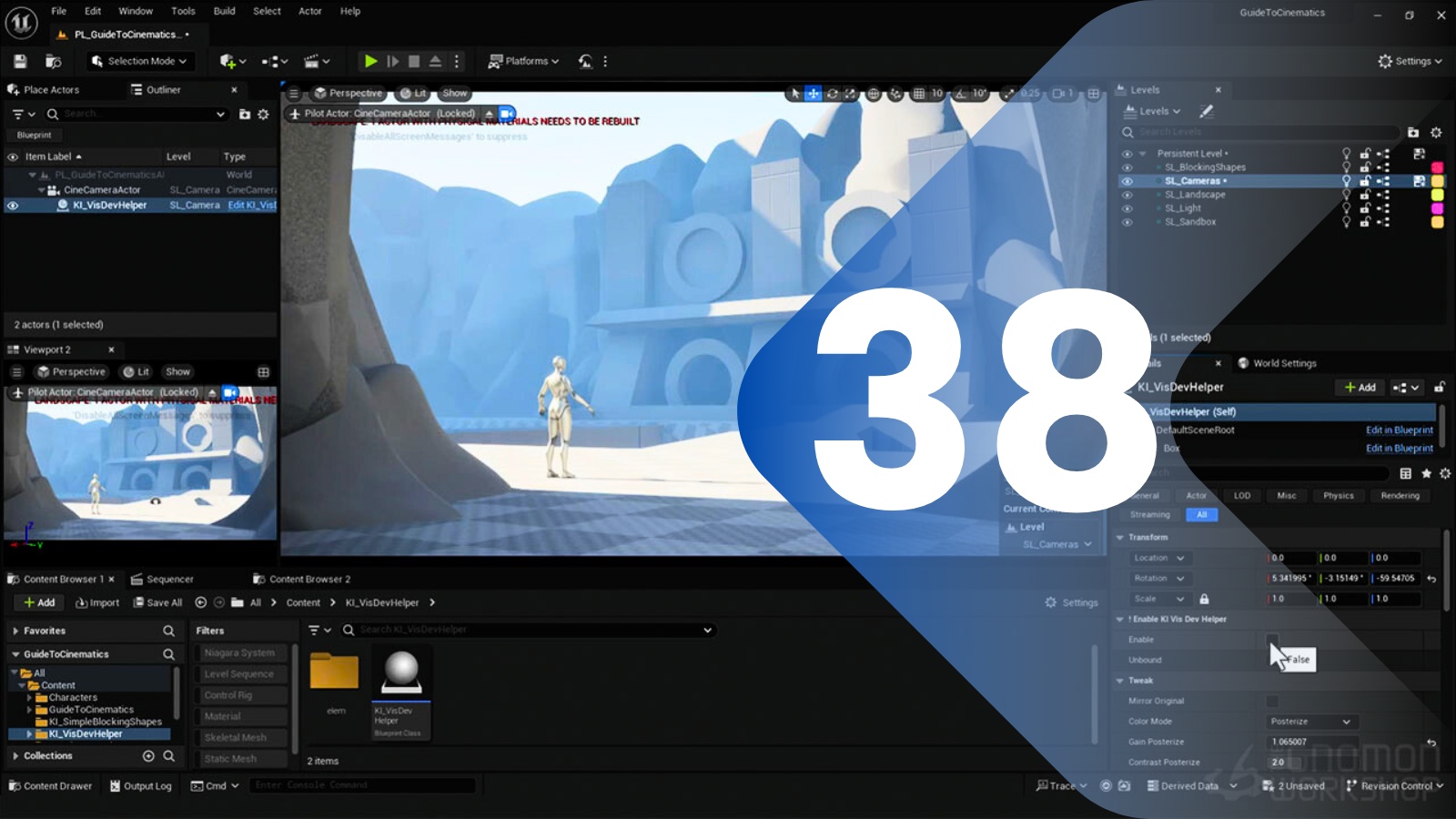
Day 38 dives into visual storytelling by teaching you how to craft cinematic moments and emotionally resonant scenes. The focus is on camera work, scene composition, lighting, and pacing, allowing you to elevate simple interactions into memorable gameplay or narrative experiences.
You’ll begin by studying framing and composition principles used in filmmaking—such as the rule of thirds, leading lines, silhouette use, and negative space—and learn how they translate into Unreal Engine’s 3D space. Understanding how visual tension or balance affects player perception helps you guide attention and tell stories visually.
Next, you’ll learn to use Unreal’s Cinematic Cameras, setting up multiple angles with adjustable lens types, depth of field, and camera shake to simulate realism. You’ll block out scenes where characters talk, enter a room dramatically, or uncover a mystery—all choreographed using camera movement and animation timing.
Lighting is crucial for mood, and this session places special focus on how key, fill, and rim lights create contrast and clarity. Volumetric fog, light shafts, and post-process effects will be used to define the emotional tone of a scene—whether it’s tense, hopeful, mysterious, or awe-inspiring.
You’ll also explore sound design—placing ambient sounds and musical stingers that react to player actions or enhance key story beats. Combined with basic animations and voice lines (if available), your scene becomes fully immersive.
The session culminates in each student building a scripted game moment, like a door slowly creaking open to reveal danger or a sweeping camera reveal of a ruined city. These crafted cinematic scenes enhance your storytelling capabilities and serve as impressive portfolio material.
